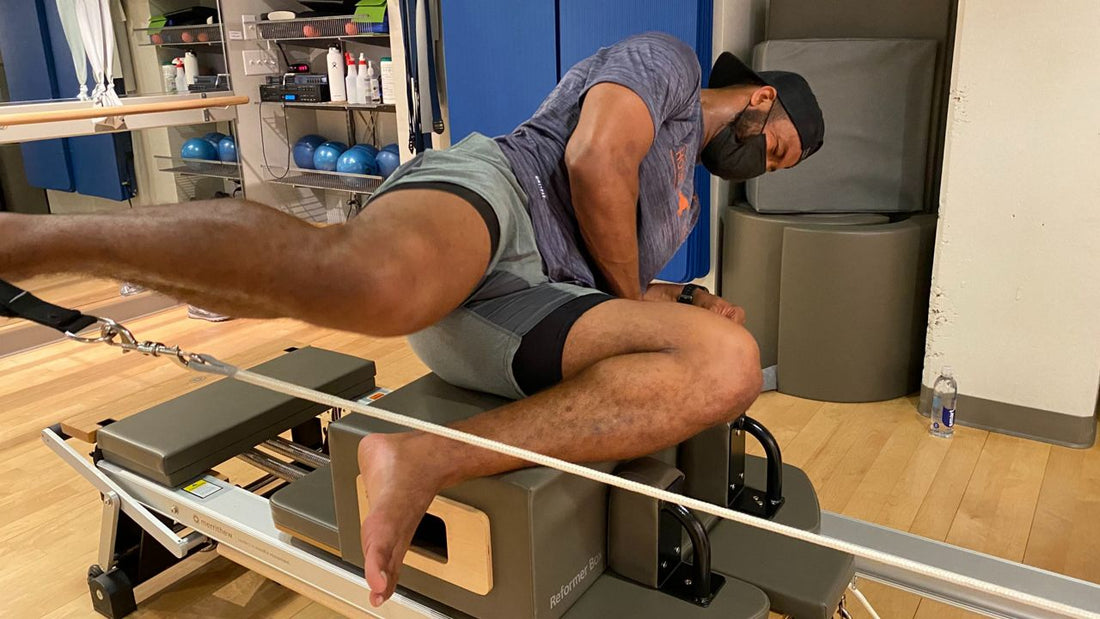In the dynamic world of athletics, the pursuit of peak performance often comes hand in hand with the risk of injuries. Enter Pilates—a holistic exercise method that not only enhances athletic performance but also serves as a powerful tool for injury prevention and healing. In this comprehensive guide, athletes will discover key techniques within Pilates that contribute to safeguarding against injuries and fostering a resilient and agile body.
1. Understanding the Athlete-Pilates Connection:
Pilates, developed by Joseph Pilates, was initially designed to rehabilitate and strengthen the bodies of World War I soldiers and ballet dancers. Today, athletes across various disciplines embrace Pilates for its ability to target specific muscle groups, improve flexibility, and enhance overall body awareness. The synergy between Pilates and athletic training creates a harmonious balance that promotes both performance and injury resilience.
2. Core Strengthening for Stability and Power:
The core is the powerhouse of an athlete's body, influencing strength, stability, and overall performance. Pilates, with its emphasis on core strengthening, provides athletes with a targeted approach to fortifying the muscles that support the spine and pelvis. A strong core not only enhances athletic prowess but also plays a pivotal role in injury prevention by minimising the risk of imbalances and compensations.
3. Flexibility Training for Injury Prevention:
Incorporating Pilates into your training regimen promotes flexibility—a crucial component of injury prevention. Pilates exercises involve controlled and dynamic movements that stretch and elongate muscles, reducing the likelihood of strains, sprains, and muscle imbalances. Enhanced flexibility contributes to improved joint mobility, allowing athletes to move with agility and reduce the risk of overuse injuries.
4. Balanced Muscle Development:
Athletic training often emphasizes specific muscle groups, leading to imbalances that can result in injuries. Pilates addresses this challenge by promoting balanced muscle development. The exercises work both the larger and smaller muscle groups, fostering a symmetrical strength that is essential for injury resilience. Balanced muscles contribute to optimal biomechanics, reducing stress on joints and minimising the risk of overuse injuries.
5. Mindful Movement and Body Awareness:
Athletic success is not solely about physical strength; it also hinges on body awareness and mindful movement. Pilates cultivates a heightened sense of body awareness, encouraging athletes to focus on alignment, posture, and movement precision. This mindfulness translates into improved technique, reduced risk of injuries due to poor form, and a deeper connection between the mind and body during training and competition.
6. Targeted Injury Rehabilitation:
In the unfortunate event of an injury, Pilates offers a tailored approach to rehabilitation. The method's adaptability allows athletes to modify exercises based on their specific injury or condition. Whether recovering from a sprain, strain, or surgical procedure, Pilates exercises can be adjusted to support the rehabilitation process, gradually restoring strength, flexibility, and overall functionality.
7. Dynamic Stability Training:
Dynamic stability is a key component of many sports, requiring athletes to maintain balance and control during dynamic movements. Pilates, with its focus on controlled and fluid movements, serves as a dynamic stability training tool. Exercises that challenge balance and coordination contribute to improved proprioception, reducing the risk of falls and enhancing an athlete's ability to navigate varied terrains or unpredictable situations.
8. Integrating Pilates into Cross-Training:
Pilates seamlessly integrates into an athlete's cross-training regimen. Whether you're a runner, cyclist, or engage in team sports, Pilates complements existing training programs by addressing specific movement patterns and muscle imbalances. By incorporating Pilates into your routine, you enhance your overall fitness, reduce the risk of overtraining injuries, and foster a more resilient body for your primary sport.
9. Postural Alignment for Enhanced Performance:
Proper posture is not only aesthetically pleasing but also fundamental for injury prevention and optimal performance. Pilates places a strong emphasis on postural alignment, teaching athletes to maintain a neutral spine and body positioning during exercises. Improved posture contributes to efficient biomechanics, reducing strain on joints and soft tissues and minimizing the risk of overuse injuries.
10. Consistency and Long-Term Athletic Resilience:
The key to reaping the full benefits of Pilates for injury prevention and healing lies in consistency. Incorporate Pilates into your training routine regularly, whether as a standalone practice or part of your cross-training efforts. Consistent engagement with Pilates over the long term builds a foundation of strength, flexibility, and body awareness that acts as a robust shield against injuries throughout your athletic journey.
Conclusion: Elevating Athletic Performance Through Pilates Mastery:
As an athlete, your body is a finely tuned instrument, and Pilates serves as the conductor, orchestrating strength, flexibility, and resilience. Embrace Pilates not only as a tool for injury prevention but as a dynamic practice that enhances your overall athletic performance. The techniques within Pilates offer a pathway to a more robust, agile, and injury-resistant body—equipping you to navigate the challenges of your chosen sport with grace and longevity. So, step onto the Pilates mat, master the techniques, and unlock the full potential of your athletic prowess.
Looking for Pilates equipment? Check out these products:

